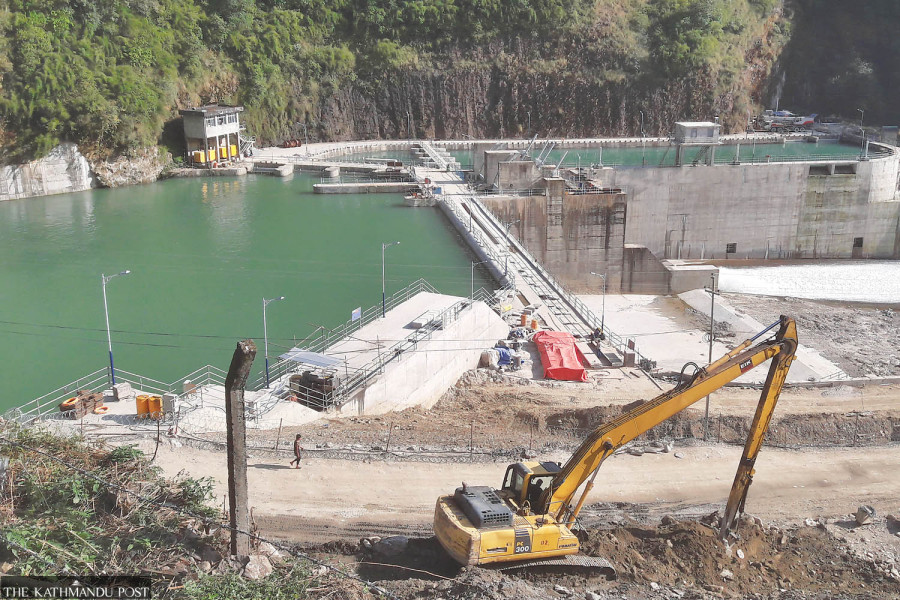Money
India raises imports of Nepal’s energy to nearly 1,000 MW
The southern neighbour on Monday approved a plan to import an additional 251 MW from Nepal.
Sangam Prasain
India approved a plan to import an additional 251 MW of electricity from Nepal on Monday, bringing the total imports to nearly 1,000 MW. Nepal now exports almost equal to what the country used to generate five years ago.
Observers see the development as a sign of strengthened ties between the neighbouring countries.
Last fiscal year, which ended in mid-July, Nepal became a net exporter of electricity. That means Nepal is selling more electricity than it buys.
The country’s power utility, Nepal Electricity Authority, said it exported 1.94 billion units of electricity, or more than 700 MW, worth Rs17.07 billion in the last fiscal year. During the dry season, Nepal imported 1.91 billion units of electricity worth Rs16.93 billion.
“We have estimated that the export revenue would increase to Rs27 billion in the current fiscal year if we succeeded in exporting the additional power or up to 1,000 MW,” said Chandan Kumar Ghosh, the authority spokesperson.
“Our preference, however, is domestic consumption. We will export the surplus,” he said. “After we receive a no-objection letter from India, the export will begin or be formalised.”
Currently, Nepal is exporting 620 MW of energy from the 400 kV Dhalkebar-Muzaffarpur cross-border transmission line, and 70 MW is being exported via the 132 kV Mahendranagar-Tanakpur transmission line.
Nepal Electricity Authority has also entered medium-term power sales agreements with state electricity boards (power distribution companies known in short as discoms) in Haryana and Bihar.
And for the first time, Nepal is exporting power to Bihar through a medium-term power sales agreement.
“We are happy that Nepal exports about 1,000 MW of electricity to India. This is a new milestone.
Our neighbourhood first policy and specific people-to-people and cultural ties have advanced our relationship,” the Indian Embassy in Nepal wrote on X.
This is the first year of a long-term energy deal in which India has signed an agreement to buy 10,000 MW of electricity from Nepal in the next ten years.
According to a statement by the Indian embassy in Nepal, the Designated Authority of India has approved importing additional energy from 12 hydropower projects in Nepal.
This takes the total allowed quantum from 690 MW from 16 projects to 941 MW from 28 projects.
In October 2021, India approved 39 MW of power imports from Nepal for the first time. This figure has grown more than 24-fold in less than three years.
Nepal first began exporting power by selling in the day-ahead market of the Indian Energy Exchange.
Since then, Nepal has also been granted access to the real-time market. Nepal has been selling 44 MW in the real-time market since the southern neighbour opened the door to competition in July last year.
India has also opened the provision of counting hydropower imports from Nepal as a part of the Hydropower Purchase Obligation for buyers in India, which further incentivizes buyers to purchase power from Nepal.
“With these developments, Nepal is on track to become the leading hydropower exporter in the South Asia region,” reads the statement. “An agreement to sell 40 MW power to Bangladesh has also been finalised. It was planned to be signed on July 28, 2024, but was postponed due to recent political developments in Bangladesh.”
Despite political instability, Nepal is slowly but steadily moving towards realising its hydropower potential. Between 2007 and 2017, the country experienced a massive electricity supply shortage that caused up to 18 hours of daily load-shedding. That caused a severe dent in Nepal’s economy, stalling the growth of manufacturing, which ultimately forced thousands of youths to try their luck abroad due to the lack of job opportunities at home.
Installed power generation capacity crawled from 706 MW in 2011 to 856 MW in 2016.
Nepal signed the India-Nepal Power Trade Agreement in 2014 during Indian Prime Minister Narendra Modi’s visit, even though it was reeling from an acute power shortage.
Nepal became a power surplus country during the wet season after the 456 MW Upper Tamakoshi Hydropower Project came into operation in July 2021.
According to the power utility, the installed electricity capacity has now increased to 3,156.96 MW, consisting of 2,990.6 MW of hydroelectric power, 106.9 MW of solar power, 6 MW of cogeneration, and 53.4 MW of thermal electricity.
“We have estimated to add more than 1,000 MW of electricity this fiscal year to take the energy quantum to 4,500 MW,” said Ghosh, the spokesperson.
Various reports show that electricity trade could significantly narrow Nepal’s trade deficit if there is a political will to attract foreign direct investment in the hydro sector.
According to a report, Nepal can earn up to Rs310 billion annually in 2030 and as high as Rs1,069 billion annually in 2045 if it sells electricity to India by harnessing its hydropower potential.
Nepal stands to generate these earnings provided it starts exporting 13 gigawatts of electricity to India by 2030 and doubles this capacity by 2045, according to a 2017 USAID report titled ‘Economic Benefits from Nepal-India Electricity Trade’.
According to the report produced by Integrated Research and Action for Development, Nepal needs to invest up to Rs2,596 billion by 2030 and another Rs2,216 billion between 2031 and 2045 to harness the electricity of this quantum.
In a statement issued recently by Kul Man Ghising, the managing director of Nepal Electricity Authority, Nepal plans to generate 28,000 MW of electricity by 2035.
It said that in the next five years, or by 2028-29, Nepal's installed capacity would reach 10,000 MW. Projects totalling nearly 7,000 MW are currently in various stages of construction.”
The electricity authority said it is also ready to sign a power purchase agreement (PPA) with solar projects up to 800MW.




 15.69°C Kathmandu
15.69°C Kathmandu















